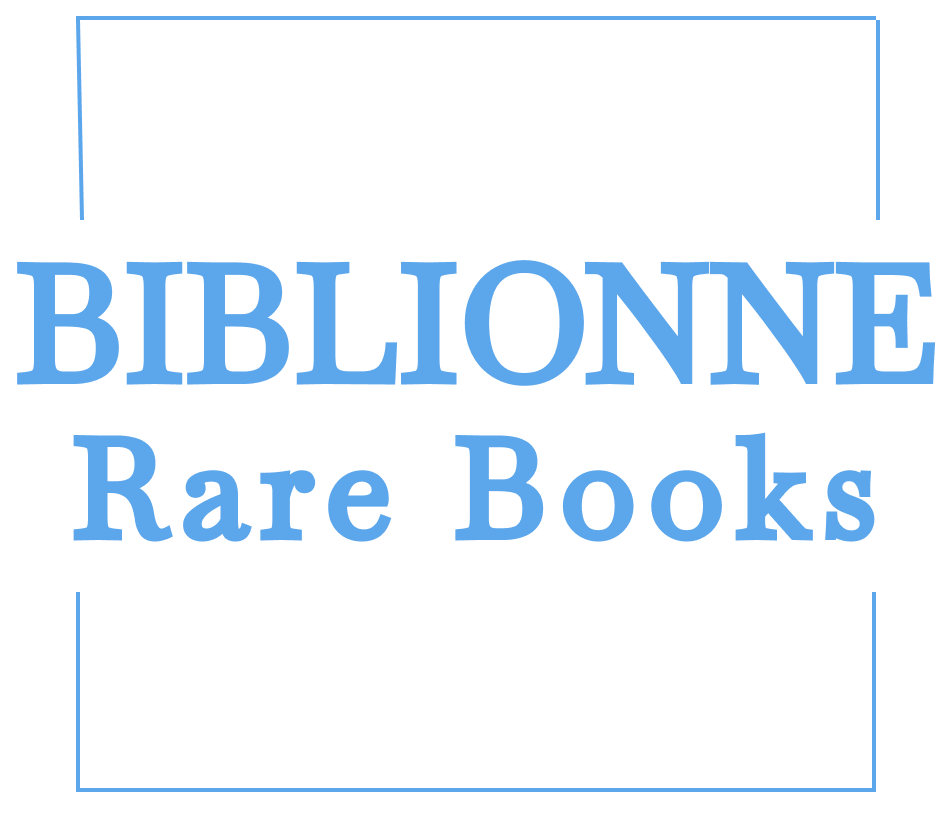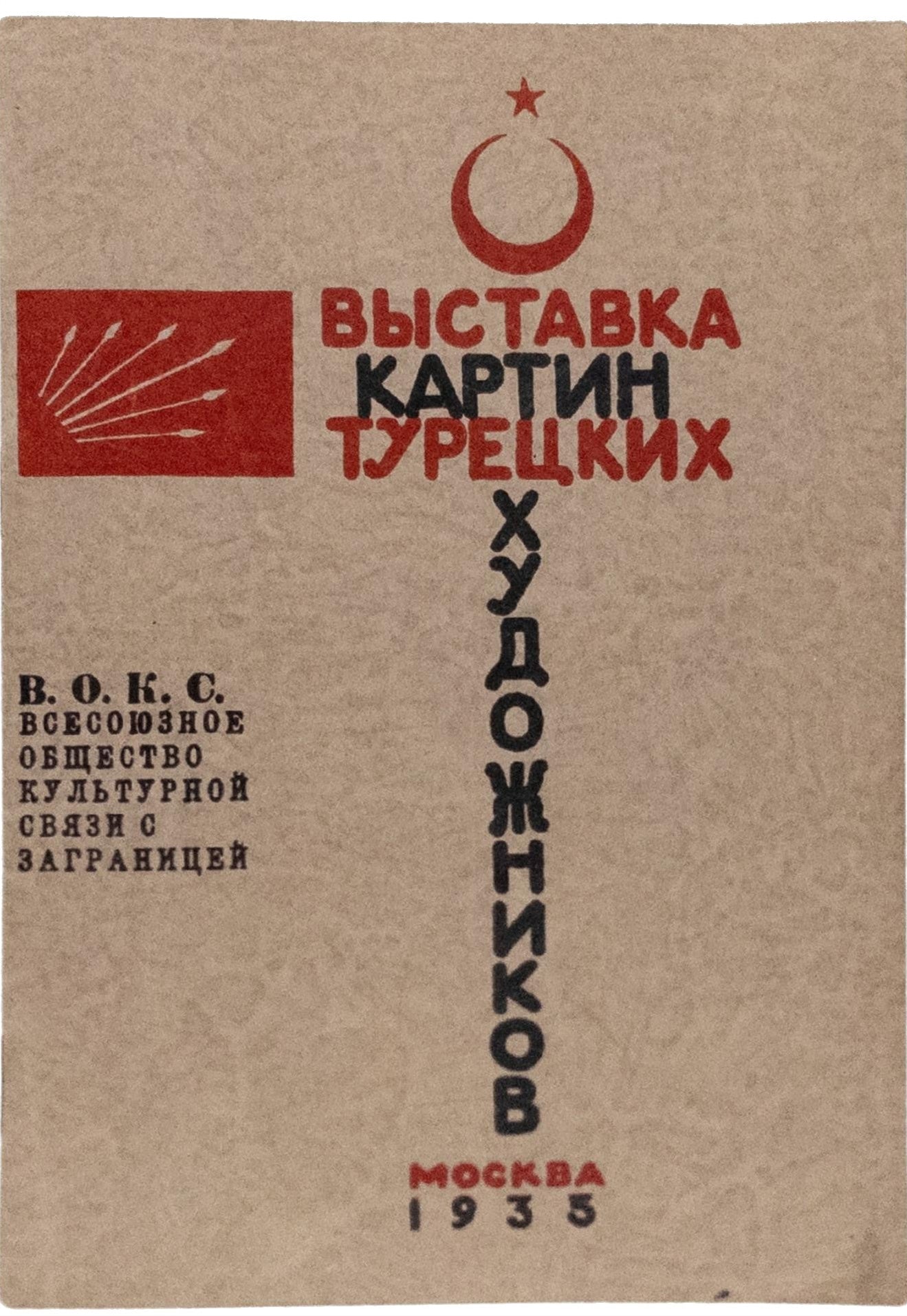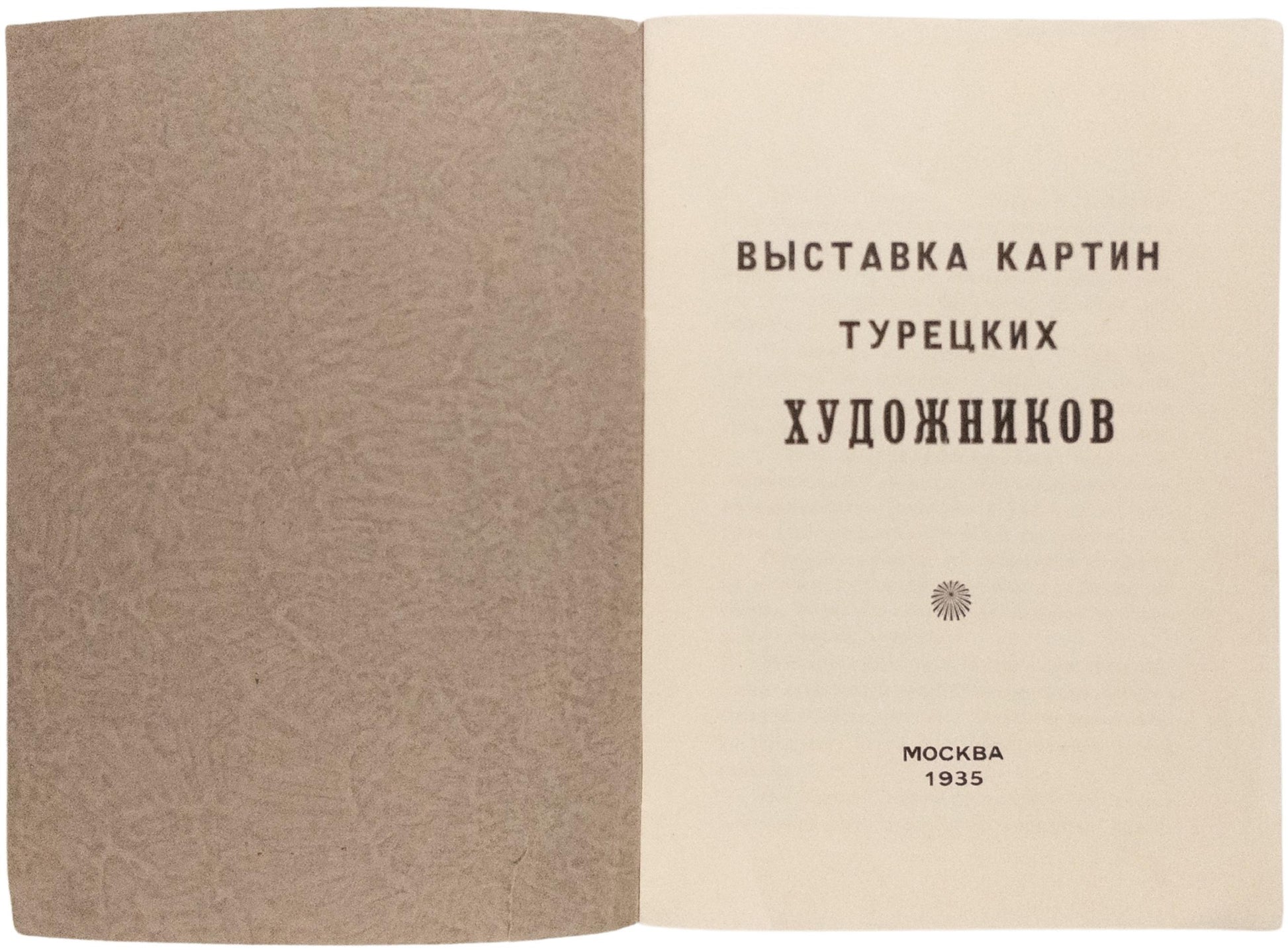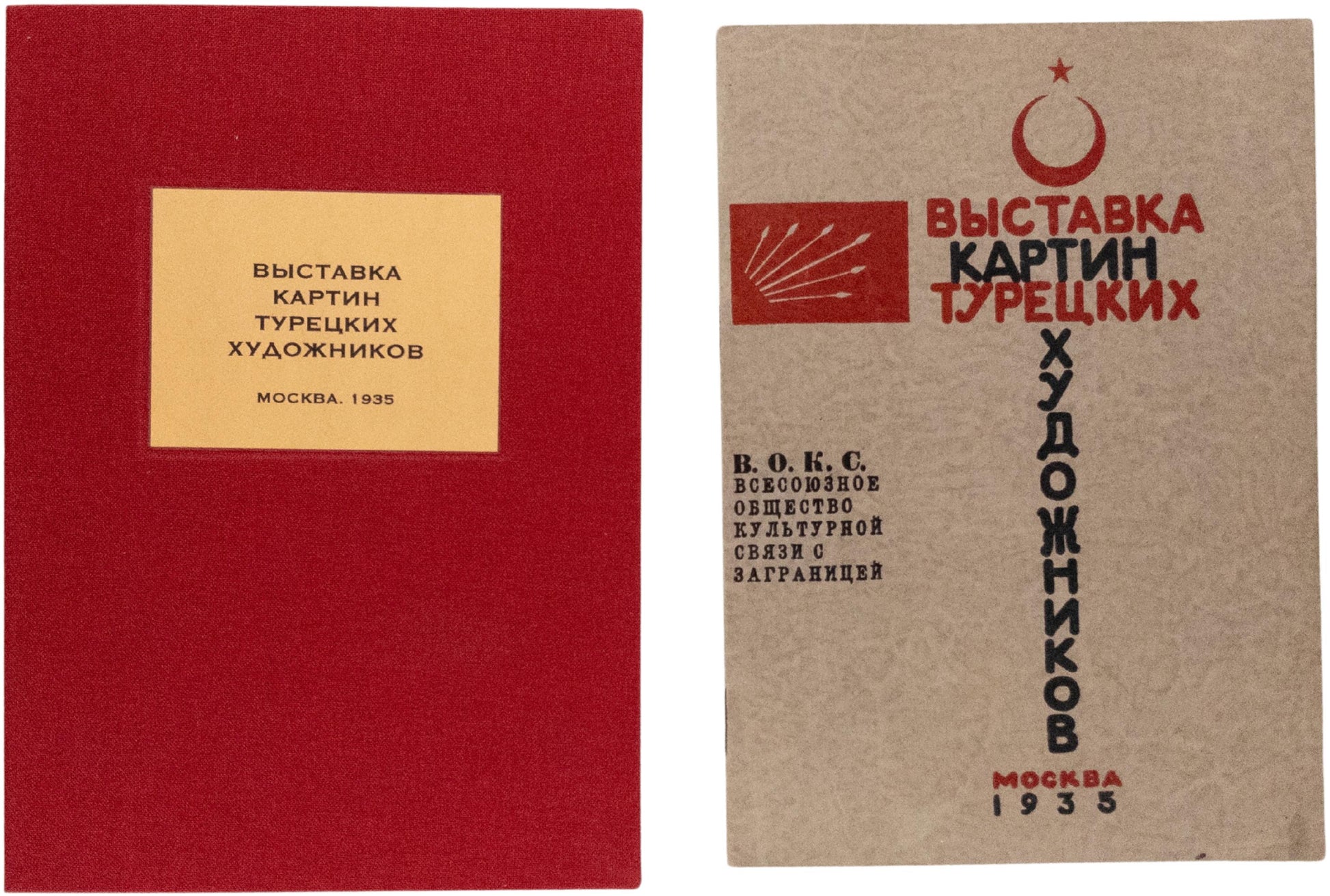Exhibition of Paintings by Turkish Artists. Very rare catalog.
Exhibition of Paintings by Turkish Artists. Very rare catalog.
Couldn't load pickup availability
[Exhibition of Paintings by Turkish Artists]. Vystavka Kartin Turetskikh Khudozhnikov.
Moskva, [V.O.K.S.] [Printed in Istanbul] , 1935.
8vo, 16 pp.
In original wrappers.
Near very good condition, small tear to lower margin at front cover.
Very rare catalog. Most likely the first catalog of Turkish art published in Russian.
The Republic of Turkey was proclaimed on October 29, 1923, and two years later, a nonaggression treaty between Turkey and the Soviet Union was signed, accelerating cultural relations between the two countries in various fields such as education, science, cinema, theater, music, and art.
In 1926, Turkey launched an innovative ‘Floating Exhibition’ aboard the SS Karadeniz, aiming to showcase its modern culture, art, and industry to various European port cities. The journey began in Stockholm on July 22, with a stop in Leningrad on July 28. This marked the first exhibition of Turkish art in the USSR; however, as far as we know, no catalog was published in Russian—only a few newspaper articles and a handful of photographs document the event.
Nearly a decade later, in 1935, a stationary exhibition of Turkish artists took place in Moscow. Organized by the All-Union Society for Cultural Relations with Foreign Countries (VOKS), an institution dedicated to fostering cultural ties between the Soviet Union and other nations. From a Soviet periodical, we determined that it opened on December 31st, led by the renowned Turkish painter and teacher İbrahim Çallı, and featured 80 paintings by both old and new generations of Turkish artists. By the way, it is important to remember that before the establishment of the Republic of Turkey, figurative painting was not widely accepted due to religious restrictions. It was only with Mustafa Kemal Atatürk that the development of modern Turkish art was encouraged, and artists were sent to Europe to study Western techniques.
The exhibition was accompanied by the printed catalog. It included brief biographies of participating artists such as İbrahim Çallı, a founding member of the Society of Ottoman Painters, as well as Namık İsmail, Bedri Rahmi Eyüboğlu, Ali Avni Çelebi, Şefik Bursalı, Feyhaman Duran, Turgut Zaim, Şevket Dağ, Sami Yetik, and Nazmi Ziya Güran, among others. It’s important to mention that many artists who participated in the exhibition were closely connected to Namık İsmail. Many of them were his students, and most had also studied in Paris, where they were strongly influenced by the Impressionist movement. This connection highlights the modern, European influence on Turkish art during this period.
Notably, the catalog was published by ‘Kâğıtçılık ve Matbaacılık Anonim Şirketi’ (which translates to 'Paper and Printing Joint Stock Company'), a Turkish company active in the paper and printing industry during the early to mid-20th century.
We couldn’t trace any copy of this edition via OCLC.






